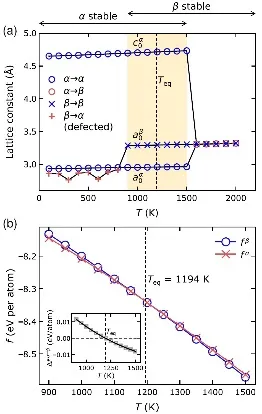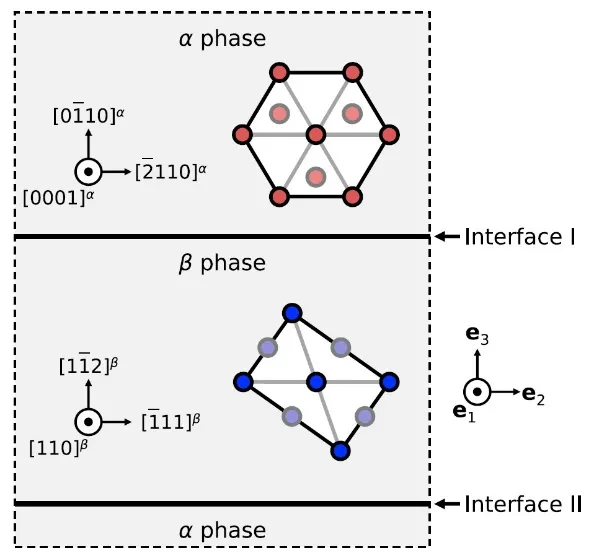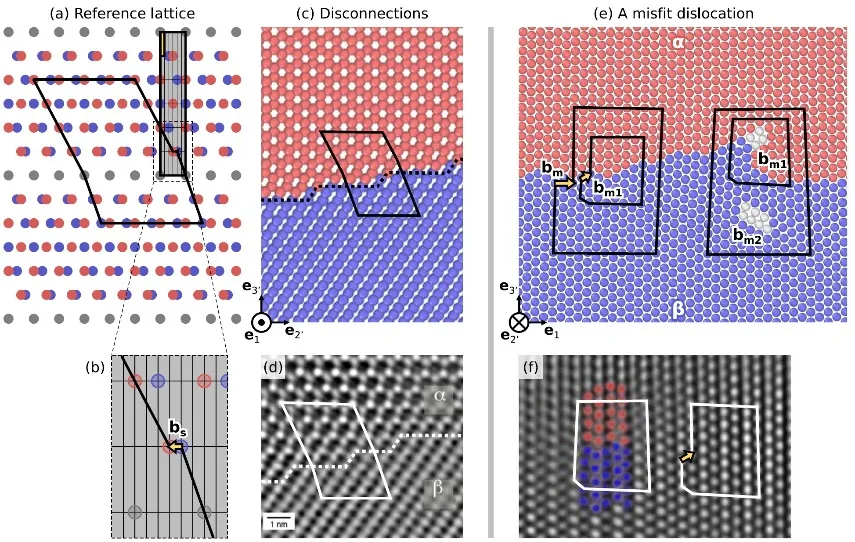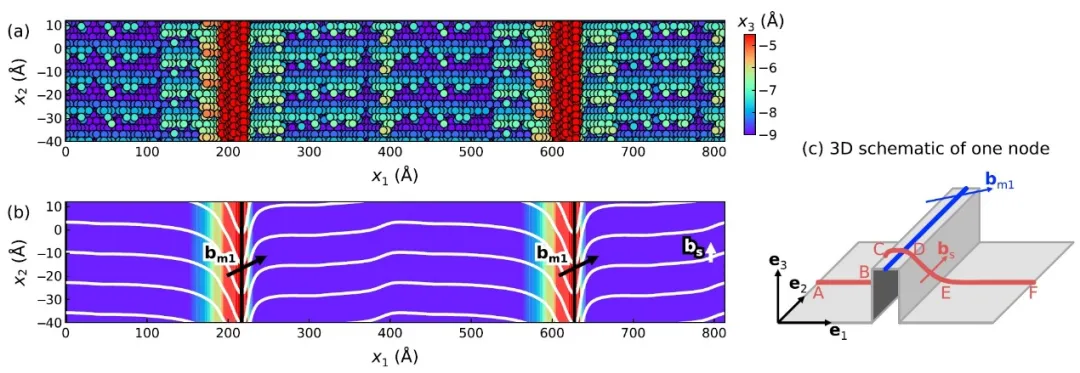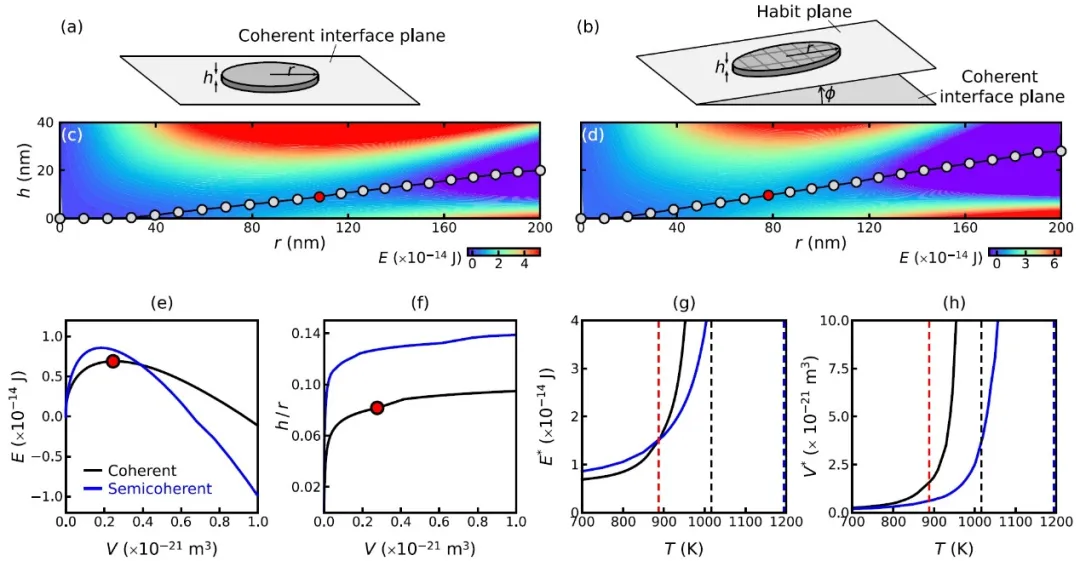钛合金以其出色的机械性能、低密度和良好的生物兼容性,在过去数十年里备受青睐,广泛应用于航空航天等行业。这类合金的微观结构,特别是α相(六方密堆积结构)与β相(体心立方结构)的混合,对其力学表现具有决定性的影响。α/β钛合金能够在力学强度、塑性、断裂韧性与成形性之间达成优异的均衡,这也正是其被广范使用的根本原因。钛合金的双相结构赋予了材料工程师在微观结构设计上的多样自由度,以实现目标力学性能的精准调控。
Coherent and semicoherent α/β interfaces in titanium: structure, thermodynamics, migration
Siqi Wang, Tongqi Wen, Jian Han & David J. Srolovitz
The α/β interface is central to the microstructure and mechanical properties of titanium alloys. We investigate the structure, thermodynamics and migration of the coherent and semicoherent Ti α/β interfaces as a function of temperature and misfit strain via molecular dynamics (MD) simulations, thermodynamic integration and an accurate, DFT-trained Deep Potential. The structure of an equilibrium semicoherent interface consists of an array of steps, an array of misfit dislocations, and coherent terraces. Analysis determines the dislocation and step (disconnection) array structure and habit plane. The MD simulations show the detailed interface morphology dictated by intersecting disconnection arrays. The steps are shown to facilitate α/β interface migration, while the misfit dislocations lead to interface drag; the drag mechanism is different depending on the direction of interface migration. These results are used to predict the nature of α phase nucleation on cooling through the α-β phase transition.
免责声明:本网站所转载的文字、图片与视频资料版权归原创作者所有,如果涉及侵权,请第一时间联系本网删除。

官方微信
《腐蚀与防护网电子期刊》征订启事
- 投稿联系:编辑部
- 电话:010-62316606
- 邮箱:fsfhzy666@163.com
- 腐蚀与防护网官方QQ群:140808414




